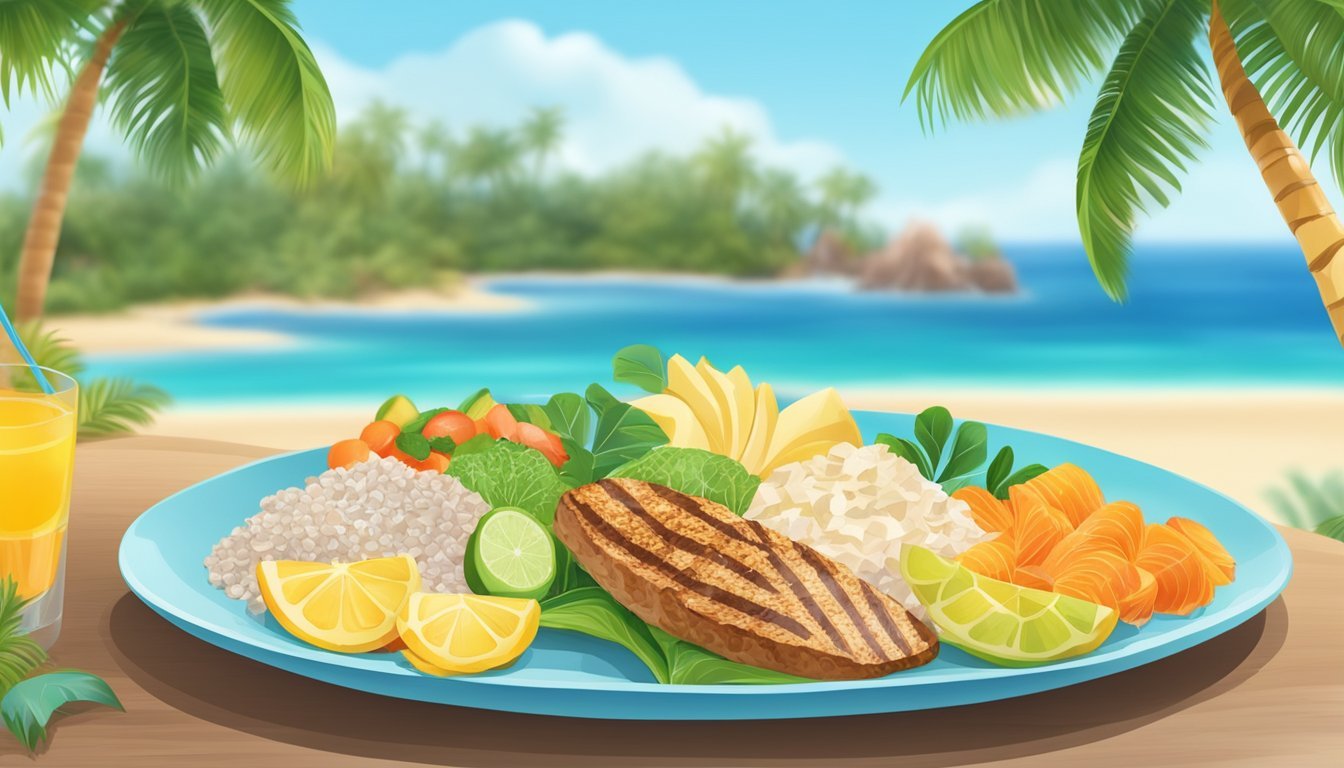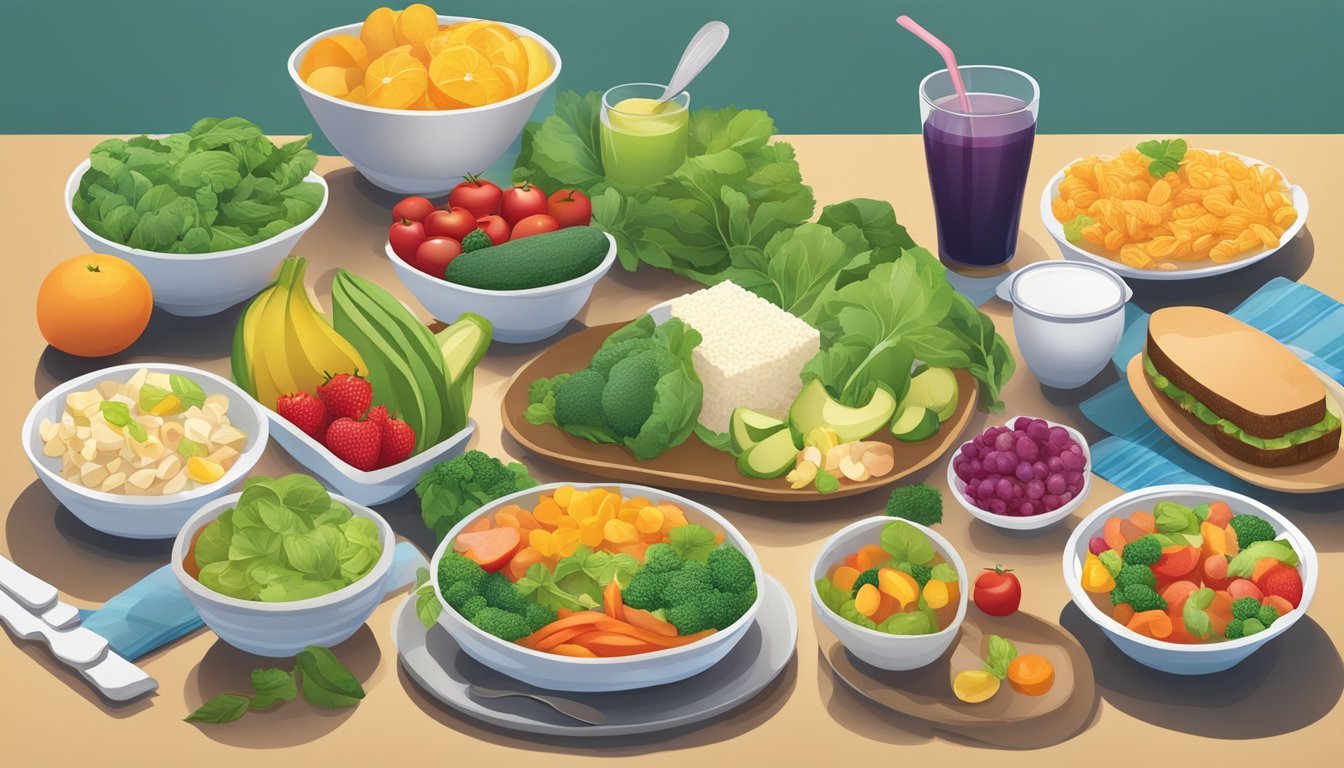The South Beach Diet: Trimming the Waistline with Phases – Understanding the Methodology
The South Beach Diet, developed by cardiologist Arthur Agatston, is a popular approach to weight loss through a strategic, phased eating plan. It emphasizes the importance of controlling hunger by eating before it strikes, focusing on the quality of carbohydrates rather than the quantity. The diet's core lies in understanding the impact of sugars and processed carbs on the body, and it is designed to promote weight loss without compromising heart health or overall wellbeing.
This diet is structured around three distinct phases, each with its specific purpose and duration. The initial phase is designed to jumpstart weight loss by reducing cravings for sugar and refined starches and is typically the strictest part of the regimen. The later phases are more moderate, aiming to establish long-term healthy eating patterns while continuing the weight loss journey at a slower, more sustainable pace.
The South Beach Diet is not just about shedding pounds; it also encourages a mindset shift towards healthier eating by recommending nutrient-dense, fiber-rich foods that can lead to improved heart health and overall physical condition. It stands out for its focus on a balanced diet rather than drastic deprivation, aiming for achievable and lasting lifestyle changes.
Principles of the South Beach Diet
The South Beach Diet emphasizes the intake of low-carb, nutrient-rich foods, advocating for a balanced consumption of good carbs, lean proteins, and healthy fats. It operates under the principle that choosing the right types of each macronutrient can lead to weight loss and improved health.
Good Carbs: This diet focuses on fiber-rich fruits and vegetables and whole grains. It distinguishes between beneficial, fiber-full carbohydrates and those that can cause spikes in blood sugar levels, promoting a more controlled energy release.
Protein: Emphasizing lean proteins, the diet suggests incorporating items like chicken, turkey, fish, and shellfish (What wine goes well with shellfish?) for their muscle-building properties and ability to promote satiety without high saturated fat content.
Healthy Fats: There is a strong focus on unsaturated fats, particularly those found in foods like olive oil, nuts, and seeds. These sources provide essential fatty acids that can benefit heart health and contribute to feelings of fullness.
The diet’s structure is compartmentalized into three phases, guiding individuals from a restrictive beginning to a more liberal long-term eating plan. The first phase is the most limiting, designed to reset eating behaviors and initiate weight loss, particularly from the midsection. In contrast, the later phases allow for a greater variety of food groups, including the gradual reintroduction of some carbohydrates and fruits, while weight loss continues at a steadier pace. The ultimate goal is not only weight reduction but also the establishment of sustainable eating habits.
Phase 1: Jumpstart Weight Loss
Phase 1 of the South Beach Diet aims for rapid weight loss by reducing cravings for sugar and refined starches, with a focus on balancing blood sugar levels.
Foods to Include
Lean Proteins: Skinless poultry, fish, shellfish, lean beef.
Vegetables: High-fiber, non-starchy vegetables like spinach, kale, and broccoli.
Legumes: Beans and lentils.
Nuts and Seeds: Almonds, walnuts, flaxseeds, and chia seeds.
Healthy Fats: Avocado, olive oil, and some other sources of monounsaturated and polyunsaturated fats.
Dairy: Low-fat or non-fat milk, yogurt, and cheese.
Foods to Avoid
Sugary Foods and Beverages: Soda, candy, ice cream, and baked goods.
Starches: Bread, rice, potatoes, and pasta.
High-Sugar Fruits: Pineapples, grapes, and ripe bananas.
Alcohol: Beer, wine, and liquor.
Saturated Fats: High-fat meats, butter, and full-fat dairy.
Expected Results
Individuals may lose about 8 to 13 pounds, mostly from their midsection, during Phase 1, which lasts for two weeks. However, results vary per individual and can be influenced by compliance with the diet and personal metabolism. It is not uncommon for weight loss to be more pronounced in this initial phase due to its restrictive nature, as it pushes the body into a state potentially similar to ketosis. Users should be aware of side effects, such as fatigue or headaches, typically temporary as the body adjusts to the diet.
Phase 2: Long-Term Weight Loss
Phase 2 of the South Beach Diet is centered on achieving steady weight loss through a reintroduction of good carbs, while maintaining blood sugar levels and continuing to focus on lean proteins and various diet components.
Introducing Carbohydrates
With the initial weight loss phase behind them, individuals embark on Phase 2, which allows for a gradual reintroduction of good carbohydrates into their diet. The key is to select carbohydrates that have a low glycemic index, which helps to maintain stable blood sugar levels. Whole grains and certain fruits are exemplary choices as they provide essential fiber and nutrients, and contribute to a feeling of fullness, avoiding calorie overconsumption.
Good Carbohydrates to Include:
Whole-grain breads and pastas
Brown rice
Quinoa
Certain fruits like berries and apples
Balanced Diet Components
In Phase 2, the individual's diet becomes more diverse, aiming to reach a balanced intake of nutrients while still promoting long-term weight loss. Caloric intake is adjusted appropriately based on their target weight and individual needs. Proteins continue to be a cornerstone, as they are crucial for maintaining muscle during weight loss.
Components of a Balanced Diet in Phase 2:
Proteins: Lean meats, fish, eggs, and soy products
Fats: Healthy fats such as avocados, nuts, and olive oil
Vegetables: At least 5 servings of non-starchy vegetables per day
Fruits: Limited servings of low-glycemic index fruits
Whole Grains: Moderate servings based on individual caloric needs
Phase 3: Maintenance Phase
In Phase 3 of the South Beach Diet, individuals have typically reached their goal weight and shift their focus toward maintaining long-term weight management and adopting long-lasting healthy eating habits.
Sustaining Weight Loss
During the Maintenance Phase, individuals are encouraged to continue applying the principles that helped them lose weight in a manner that is sustainable for a lifetime. The diet's flexibility allows one to balance food intake and energy output in order to maintain their goal weight. Key strategies for sustaining weight loss include:
Monitoring weight regularly to ensure stability
Being mindful of portion sizes
Continuing to consume a variety of nutrient-dense foods
Incorporating Lifestyle Changes
The Maintenance Phase is not just about food; it encompasses holistic lifestyle changes that support weight maintenance. Incorporating regular physical activity into one’s daily routine is crucial. Additional lifestyle changes entail:
Making healthy eating a daily norm, with a focus on whole grains, fruits, vegetables, and lean proteins
Avoiding refined carbs and sugars that could disrupt blood sugar levels and weight maintenance efforts
Learning to adjust the diet according to one’s own body signals and needs
Complementary Practices
In conjunction with the dietary components of the South Beach Diet, certain practices can enhance one's journey towards a healthy waistline. These include a structured exercise regimen, the adoption of behavioral changes, and methods of managing stress—all integral to achieving a sustainable lifestyle and heart health.
Exercise and Physical Activity
Regular exercise is a cornerstone of any effective weight management program. For participants of the South Beach Diet, integrating physical activity bolsters heart health and augments fat loss, especially during Phase 1's period of rapid weight loss. Healthy fats play a role in providing energy for workouts. It's recommended that individuals engage in:
Cardiovascular exercise: At least 30 minutes a day, ranging from brisk walking to swimming.
Strength training: Two to three times a week, focusing on all major muscle groups.
These activities complement the diet by boosting metabolism and building muscle that can burn more calories, even at rest.
Behavioral Changes
Adopting a new lifestyle that supports weight loss goals requires behavioral changes. The South Beach Diet isn't only about what one eats; it's about changing one's relationship with food. These alterations might include:
Eating smaller, more frequent meals to maintain blood sugar levels.
Choosing foods rich in healthy fats like avocados, nuts, and olive oil, which can increase satiety.
Being mindful of portion sizes to avoid overeating.
Behavior modification supports long-term adherence to the diet and helps maintain weight loss from Phase 2 onwards.
Stress Management
Stress can derail even the most disciplined diet efforts, leading to emotional eating and weight gain. Effective stress management is therefore a complementary practice for maintaining the rigorous yet beneficial structure of the South Beach Diet. Techniques include:
Mindfulness meditation: Practicing daily to improve one's emotional response to stress.
Regular exercise: Doubling as a stress reliever because it releases endorphins, which are natural mood lifters.
Adequate sleep: Ensuring 7-9 hours per night to recover from stress.
By managing stress, individuals can prevent the derailment of their diet and preserve both their mental and heart health.
Health Benefits and Potential Risks
The South Beach Diet is associated with weight loss and health improvement, particularly in heart health and glycemic control. However, the diet is not without its downsides, and potential side effects should be considered.
Benefits to Heart Health
The South Beach Diet, formulated by a cardiologist, is crafted to enhance heart health. Weight loss achieved through this diet can lead to improved cholesterol levels, reducing the chances of developing heart disease. It's lower in carbohydrates than typical diets, which is indicative of its role in potentially reducing triglyceride levels, a benefit for maintaining a healthy heart.
Impact on Diabetes and Blood Sugar Levels
Individuals with type 2 diabetes may find the South Beach Diet beneficial due to its phased approach to carbohydrate intake, which can aid in blood sugar level management. This diet emphasizes controlled carb reintroduction, which could help stabilize blood sugar levels and improve insulin resistance, a significant concern in diabetes management.
Potential Risks and Side Effects
The diet can be considered restrictive, especially during its initial phase, leading to potential side effects such as fatigue, dizziness, and irritability. The risk of nutrient deficiencies is present if the dieter does not follow the guidelines carefully. Furthermore, the cons of this diet include its strict regimen, which might be challenging to adhere to, causing possible deviation from the diet and making long-term commitment a key factor to consider.
Diet Comparison
Comparing the South Beach Diet to other meal plans can help determine its effectiveness for weight management and overall health. Distinctions are made in their approach to carbohydrates and fat consumption.
South Beach vs. Keto Diet
The South Beach Diet and the Keto Diet are both considered low-carb, but they differ significantly in their approach. The South Beach Diet phases in complex carbohydrates, often referred to as "good carbs," after the initial restrictive phase. It focuses on a balanced selection of carbohydrates, proteins, and fats.
In contrast, the Keto Diet drastically reduces carbohydrate intake to typically below 50 grams a day to induce a state of ketosis, where the body burns fat for energy instead of carbohydrates. Due to its high-fat requirement, it remains consistently low in carbohydrates, aiming for long-term ketosis.
Carbohydrate Intake:
South Beach Diet: Phases in complex carbs.
Keto Diet: Maintains very low carb intake to sustain ketosis.
Fat Intake:
South Beach Diet: Encourages healthy fats.
Keto Diet: Requires high fat for ketosis.
Goal:
South Beach Diet: Long-term weight management and heart health.
Keto Diet: Quick weight loss through ketosis.
South Beach vs. Other Low-Carb Diets
The South Beach Diet shares similarities with other low-carb diets in its initial phase, where the restriction of carbohydrates is pronounced. However, it gradually allows for the reintroduction of nutrient-dense, fiber-rich carbohydrates in moderation as part of its phased approach.
Most other low-carb diets restrict the intake of carbohydrates to varying degrees but do not necessarily follow the South Beach Diet's structured phases or its specific emphasis on the types of carbohydrates consumed. The phased approach is designed to teach sustainable eating habits.
Phases:
South Beach Diet: Specific 3-phase program.
Other Low-Carb Diets: Vary by diet, not always phased.
Carbohydrate Quality:
South Beach Diet: Encourages high-quality, fibrous carbs.
Other Low-Carb Diets: Carbohydrate quality varies.
With its distinct phased methodology and selective carbohydrate integration, the South Beach Diet distinguishes itself from other low-carb diets that may take a more static approach to carbohydrate consumption.
Sample Meal Plans and Recipes
The South Beach Diet is structured around three phases, each designed to help reduce cravings and promote weight loss in a stepwise approach. Phase 1 is the strictest period, eliminating nearly all carbohydrates, while Phases 2 and 3 gradually reintroduce healthy carbs back into the diet.
During Phase 1, the emphasis is on lean protein sources such as chicken, fish, and eggs, which are complemented by non-starchy vegetables. Legumes and low-fat dairy are included to provide both nutrients and variety. A simple recipe one might enjoy is a vegetable omelet using spinach, bell peppers, and a sprinkling of feta cheese.
Phase 1 Sample Meal Plan:
Breakfast: Vegetable omelet with a side of cottage cheese (how long does cottage cheese last?)
Lunch: Grilled chicken salad (mixed greens, cucumbers, tomatoes)
Dinner: Baked salmon with steamed broccoli
Snacks: Raw nuts and pepper strips
As individuals transition to Phase 2, they can reintroduce whole grains and fruits. Meals become more diverse with the addition of quinoa, brown rice, and berries. A heart-healthy meal could include grilled trout drizzled with olive oil, accompanied by a side of quinoa pilaf.
Phase 2 Sample Meal Plan:
Breakfast: Scrambled eggs with whole-grain toast
Lunch: Tuna salad on mixed greens with a vinaigrette
Dinner: Grilled trout with quinoa and asparagus
Snacks: Greek yogurt with sliced strawberries
By Phase 3, the diet becomes more of a lifelong eating pattern focusing on balance and maintenance. Recipes often integrate a broad variety of proteins, whole grains, fruits, and vegetables to create fulfilling and nutritious meals.
Phase 3 Sample Meal Plan:
Breakfast: Berry smoothie with a scoop of protein powder
Lunch: Turkey wrap with whole-grain tortilla, lettuce, and avocado
Dinner: Chicken fajita lettuce wraps
Snacks: Mixed nuts and a pear
Throughout all phases, portion control and regular meal timing are emphasized to help manage hunger and metabolism. The provided recipes and meal plans cater to a balanced approach to dieting, where nutrient-dense foods take center stage.
Success Stories and Testimonials
Individuals who have embarked on the South Beach Diet often share success stories that reflect significant weight loss and a transition to healthier eating habits. These narratives not only demonstrate successful outcomes but also serve as motivation for others considering the diet.
Healthy Eating Transformation: Many testimonials highlight a shift to eating more fiber-rich foods and healthy fats, consistent with the South Beach Diet's recommendations.
Phased Approach: The success stories frequently emphasize the effectiveness of the diet's phased approach, wherein each phase is designed to gradually expand the variety of permissible foods.
Personal Stories Highlighting Weight Loss:
A woman lost 100 pounds initially through the South Beach Diet, showcasing the potential impact of the low-carbohydrate, high-protein diet.
Inspiring tales from The South Beach Diet Supercharged show women combining diet with exercise for added benefits.
Motivation and Support:
Accounts often credit the community and resources associated with the South Beach Diet for providing the necessary support and motivation.
Here is a tabulated summary of success elements reported:
Element of Success Description Structured Phases Eases dieters into lifestyle changes Real Results Individuals have documented weight loss Healthy Fats & Fiber A cornerstone of the diet Support Network Online forums, books, and resources Lasting Lifestyle Change Beyond initial weight loss, a move to long-term health
These stories offer a glimpse into the positive outcomes achievable with dedication to the South Beach Diet's guidelines.
Frequently Asked Questions (FAQs)
What is the South Beach Diet?
The South Beach Diet is a weight-loss diet plan that emphasizes a balance of good carbohydrates and healthy fats. It operates in three distinct phases, each with specific dietary guidelines.
Who created the South Beach Diet?
The diet was developed by cardiologist Dr. Arthur Agatston as a heart-healthy way to lose weight and maintain a healthy lifestyle.
How does the South Beach Diet work?
It begins with Phase 1, a two-week period designed to reset the body by eliminating cravings for sugar and refined starches. This phase is the most restrictive. Phase 2 reintroduces some carbs and continues until the individual reaches their target weight. The final phase, Phase 3, focuses on maintenance and a sustainable way of eating.
Is scientific research behind the South Beach Diet?
Studies suggest that diets lower in carbohydrates, like the South Beach Diet, may be effective for weight loss. They tend to encourage intake of foods with a lower glycemic index which, according to research, may lead to improved satiety.
Phases Duration Key Characteristics Phase 1 2 weeks Most restrictive; no carbs, sugar, or alcohol Phase 2 Until target weight is reached Gradual reintroduction of whole grains and fruits Phase 3 Indefinite Balanced diet for weight maintenance
Are there any foods that must be avoided on the South Beach Diet?
During Phase 1, individuals should avoid all sugars, fruits, and higher carb grains. As they transition into Phases 2 and 3, more variety is introduced, but highly refined foods remain off-limits.
What are common side effects during Phase 1?
Some may experience headaches, fatigue, or dizziness due to lower carb intake and potential withdrawal from sugar.
Where can I find expert advice on the South Beach Diet?
For expert advice, it is recommended to consult a dietitian or healthcare provider familiar with the South Beach Diet. Official resources and books by Dr. Agatston provide comprehensive guidelines.





